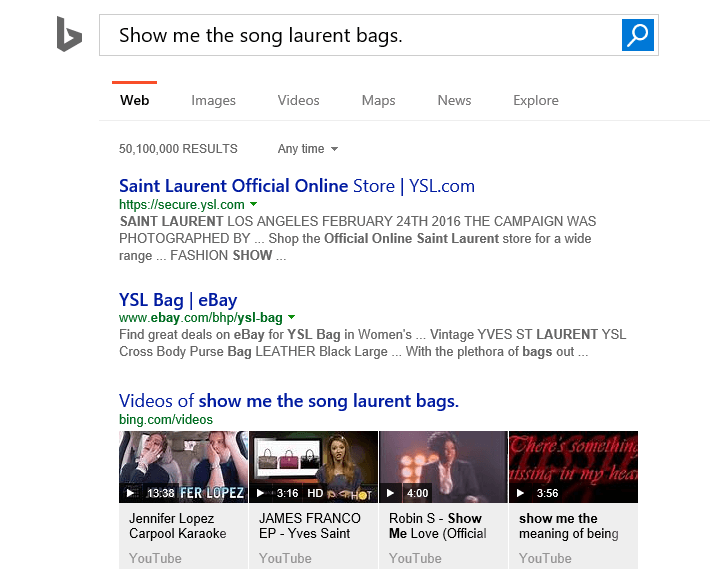5 Digital Marketing Predictions for 2017
This past year has been an intense one, to say the least. But we’re finally nearing the end, and we’re ready to set our sights on 2017! Of course, in order to make appropriate assumptions about what will occur next year, we have to look back at some of the notable digital marketing predictions that came true this year.
Throughout 2016, we saw a rise in voice search queries, Google’s Penguin algorithm began updating in real-time, mobile-friendly sites continued to be rewarded, and so much more. Social media platforms like Snapchat and Instagram expanded their arsenals, and AI (Artificial Intelligence) technology was such a favorite this year that Amazon was sold out of its Echo and Echo Dot devices at one point.
Since many of these popular trends are still pretty new, we can only expect them to continue to grow in the new year.
Below are some of our digital marketing predictions for the upcoming year
1. The shift from desktop-first to mobile-first will continue
 Mobile search has always been an important component of SEO — and of digital marketing in general — so it’s no surprise that its role continues to grow as years pass. In 2015, Google released a mobile-friendly update to their search algorithm. Since this update, mobile-friendly websites have had the advantage over others when it comes to mobile rankings.
Mobile search has always been an important component of SEO — and of digital marketing in general — so it’s no surprise that its role continues to grow as years pass. In 2015, Google released a mobile-friendly update to their search algorithm. Since this update, mobile-friendly websites have had the advantage over others when it comes to mobile rankings.
Today, many businesses are receiving more traffic from mobile search over desktop. In fact, Moz performed a study that showed 20 out of 24 industry niches note mobile as their primary source of web traffic. As technology progresses and Google continues to reward those with mobile-friendly sites over others, we have no doubt that the mobile-first trend will continue to rise and most likely overcome our desktop-first mentality.
2. Say hello to Progressive Web Apps
 If the mobile-first shift comes to pass, it’s possible that the move towards PWAs will as well. Just as AMP (a code that optimizes mobile websites) took precedence in 2015 and 2016, PWAs, or Progressive Web Apps, may take center stage in 2017. Users are becoming less and less patient with page load speeds, and even a highly optimized site has trouble loading within 3 seconds. Enter: Progressive Web Apps.
If the mobile-first shift comes to pass, it’s possible that the move towards PWAs will as well. Just as AMP (a code that optimizes mobile websites) took precedence in 2015 and 2016, PWAs, or Progressive Web Apps, may take center stage in 2017. Users are becoming less and less patient with page load speeds, and even a highly optimized site has trouble loading within 3 seconds. Enter: Progressive Web Apps.
They’re defined as user experiences that have the same capabilities as a web page, and are reliable, fast, and engaging. In other words, they allow a website/website page to work as if it were an app, without actually being an app. Although PWAs may not be suitable for every type of business, there are plenty that could benefit from them, such as content-heavy or real-time data sites, chat-related platforms, news outlets, and blogs.
As consumers yearn for safer, faster, and easier-to-use mobile-friendly websites, we can expect to see a greater prominence of Progressive Web Apps in 2017. They may even replace the use of separate mobile sites or apps entirely — but let’s not get ahead of ourselves.
3. Live video will take over (at least with social media and content marketing)
 Consumers have become accustomed to carrying around mobile devices and having practically anything they need right at their fingertips. Now, both brands and individuals have begun using livestreaming as a way to be more in-the-moment with their followers (capitalizing on that whole #FOMO trend of the last couple years).
Consumers have become accustomed to carrying around mobile devices and having practically anything they need right at their fingertips. Now, both brands and individuals have begun using livestreaming as a way to be more in-the-moment with their followers (capitalizing on that whole #FOMO trend of the last couple years).
In the past, brands chalked up their entire video marketing strategy to the hope that one of their videos would go viral. However, as video (live video, in particular) becomes a larger part of users’ everyday lives, brands are going to have to work on continuously creating quality video content.
Joe Pulizzi remarks on how video will become an important part of content marketing strategies in 2017 in an article for the Content Marketing Institute:
“It doesn’t take “Chewbacca Mom” to show us how big and important using video and having a visual storytelling strategy are…most brands [should begin] building a process and organization around the ongoing delivery of valuable information through video.”
As top platforms like Instagram, Facebook, and Snapchat are incorporating live video, we can be sure we’ll see it grow in 2017.
4. Native advertising will flourish
 Back in the good ol’ days, online advertising was defined by intrusive pop-up ads and annoying flashing sidebar ads. And it’s important to remember that most of those ads were irrelevant and spammy.
Back in the good ol’ days, online advertising was defined by intrusive pop-up ads and annoying flashing sidebar ads. And it’s important to remember that most of those ads were irrelevant and spammy.
While there are still plenty of ads like this, native advertising has helped online ads become more user-friendly. And to ensure that users don’t click on unwanted ads, brands are required to clearly label these ads as such. Websites like BuzzFeed, Mashable, and even The New York Times offer sponsored content that relate the ads to content users are already interested in viewing.
Brands are also taking advantage of the native advertising potential on social media sites like Facebook, Snapchat, and Instagram. With Facebook pushing their Promoted posts and ads and Instagram releasing it’s “Shop Now” button, we’re sure to see more online native advertising in the coming year.
5. People are going to want to SEE the data
 Data is key to knowing the who’s, what’s, when’s, why’s, and how’s of your marketing strategy. However, that doesn’t mean analyzing data is easy. In all honesty, it can be boring and immensely time-consuming when done properly. Even if you analyze data every day, digesting all those numbers can be tricky.
Data is key to knowing the who’s, what’s, when’s, why’s, and how’s of your marketing strategy. However, that doesn’t mean analyzing data is easy. In all honesty, it can be boring and immensely time-consuming when done properly. Even if you analyze data every day, digesting all those numbers can be tricky.
Thankfully, there are plenty of data visualization tools that can help. As technology evolves, so are visuals; and as more data visualization tools become available, the more businesses are going to start using them. In addition, as narrative content grows in popularity, the need for visual storytelling grows.
Keeping these technological and content marketing trends in mind, 2017 is probably just the beginning of the data visualization revolution.
Recap
While we don’t have a crystal ball to know exactly what 2017 will hold, we feel it’s safe to say there is a lot to look forward to. What are your digital marketing predictions for the upcoming year? Leave your thoughts in the comments — we’d love to hear ‘em!























